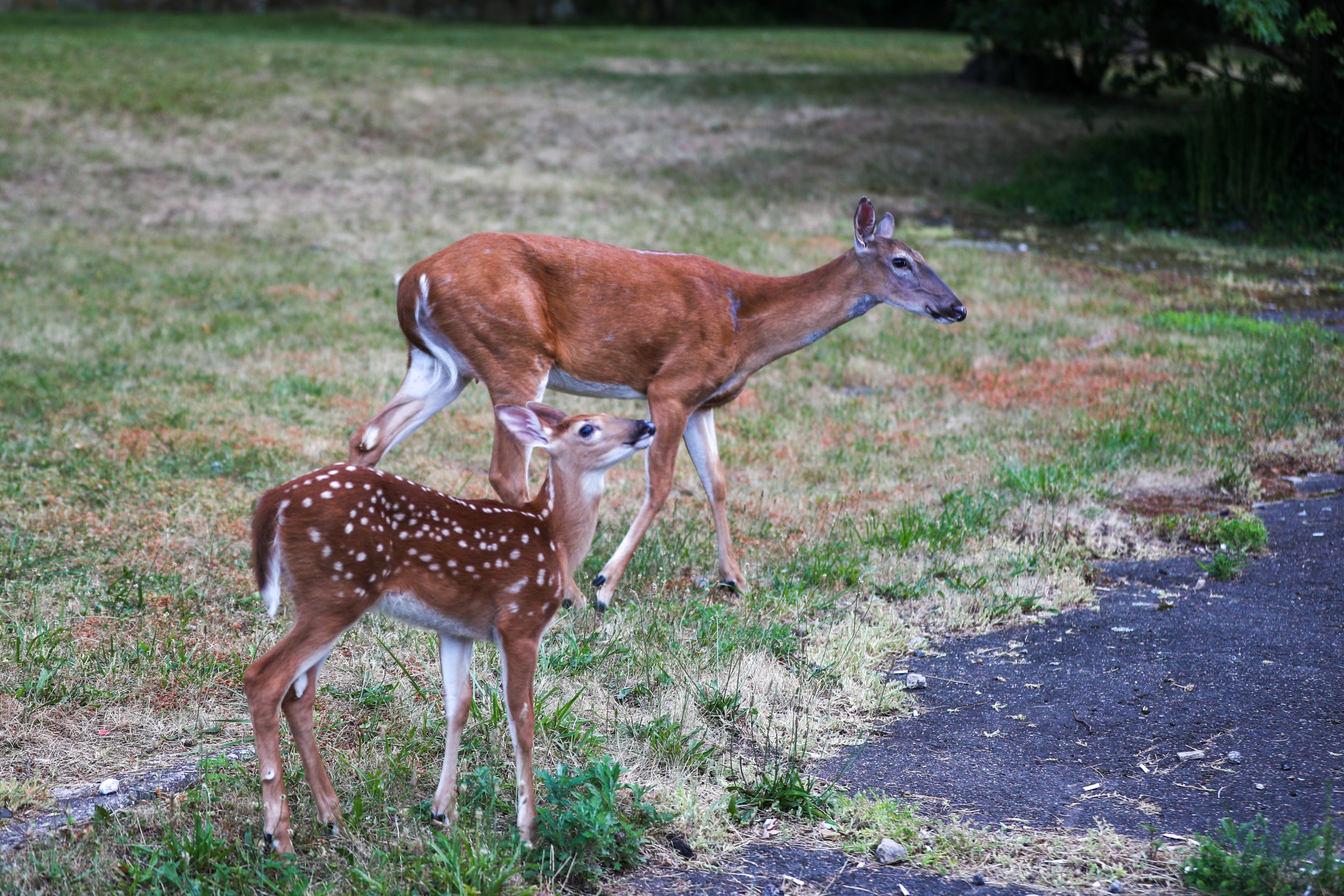
There are more than 30 million white-tailed deer in the U.S. That’s a boon for hunters, a headache for gardeners, a hazard for drivers—and now, it appears, a possible problem in the world’s ongoing effort to control the COVID-19 pandemic. According to a new study (which has not yet been peer-reviewed) published on bioRxiv, researchers at Penn State University found that several white-tailed deer captured and tested on Staten Island in New York were infected with the Omicron variant of SARS-CoV-2. It is the first such discovery in non-human animals.
COVID-19 has been found before in deer. In 2020 and 2021, the U.S. Department of Agriculture detected earlier versions of the virus in 481 deer sampled in 15 states. But the Omicron variant is causing greater worry than those earlier strains simply because of its extreme transmissibility and the close quarters in which humans and deer often live.
The study was small; researchers took nasal swabs from 68 deer, and they found Omicron in five of them. The question the discovery raises is, how transmissible is the virus from human to deer and back again? For now, at least, the researchers can’t say. The study merely showed that the animals were harboring the virus but revealed nothing about how they acquired it, whether they shed it, or even if they are capable of passing it among themselves.
“As we continue to find these spillovers in animals, such as deer, the complexity of the virus evolution and the transmission networks becomes much more complicated,” says Suresh Kuchipudi, a Penn State veterinary virologist and a co-author of the study. “The potential does exist that the virus could circulate among the deer and they could become a major reservoir.”
Troublingly, at least one of the deer in the sample was found to not only harbor the virus but also to have a high level of antibodies against it. That suggests a sort of wildlife equivalent of a breakthrough infection: an animal that had had the virus once before, developed a natural immune response to it, but then became reinfected.
If deer are carrying the virus, there’s no reason to assume other animals aren’t as well. While it’s not practical—or even possible—to test every species of animal that comes within infectious distance of humans, certain animals are of particular interest to investigators. Kuchipudi is concerned about deer mice, skunks, and feral cats, which previous laboratory studies have shown are easily infected with COVID-19. Other species of rodents are also causing worry.
“We can’t rule out the possibility of rodents picking up the virus from people and spreading it to other animals that live in the same ecological space,” Kuchipudi says.
The biggest concern for now, the Penn State authors argue, is not so much whether deer will be one more meaningful vector in the spread of Omicron to humans. We’re doing a perfectly fine job of spreading it among ourselves already. Rather, the deer could become a petri dish for viral mutation and the emergence of still more variants, which could, theoretically, jump species and infect humans.
“If unmonitored, the continued circulation of this virus in any animal species could result in evolution and emergence of completely novel variants that may potentially undermine the protection provided by the current vaccines,” says Kuchipudi. “The last thing we want is to be caught by surprise by a completely novel variant that can emerge from animals.”
Researchers are now trying to figure out how to mitigate that risk. There is some precedent for dealing with animals found to harbor COVID-19, but it is extreme: When 11 hamsters in a Hong Kong pet shop were recently found to have COVID-19, authorities ordered the killing of 2,000 hamsters, and when the virus was found circulating among 17 million farmed mink in Denmark in November 2020, the mink were slaughtered. Taking such measures against infected deer in the U.S. is, obviously, not possible.
Rather, Kuchipudi recommends, American wildlife management experts could begin with a program of capturing and vaccinating deer in areas where the virus is found to be circulating. Looking for the source of the virus—through wastewater or other environmental contaminants—might be an option as well.
Infected deer do not represent the most pressing of the problems health officials face in controlling the pandemic, but they do serve as one more sign of the ubiquity of the virus. SARS-CoV-2 is a decidedly opportunistic pathogen, increasingly undiscriminating in the hosts it infects and will continue to infect. A virus that seemed to arrive all at once more than two years ago will not be leaving us anywhere nearly as quickly.
More Must-Reads from TIME
- Why Biden Dropped Out
- Ukraine’s Plan to Survive Trump
- The Rise of a New Kind of Parenting Guru
- The Chaos and Commotion of the RNC in Photos
- Why We All Have a Stake in Twisters’ Success
- 8 Eating Habits That Actually Improve Your Sleep
- Welcome to the Noah Lyles Olympics
- Get Our Paris Olympics Newsletter in Your Inbox
Write to Jeffrey Kluger at jeffrey.kluger@time.com